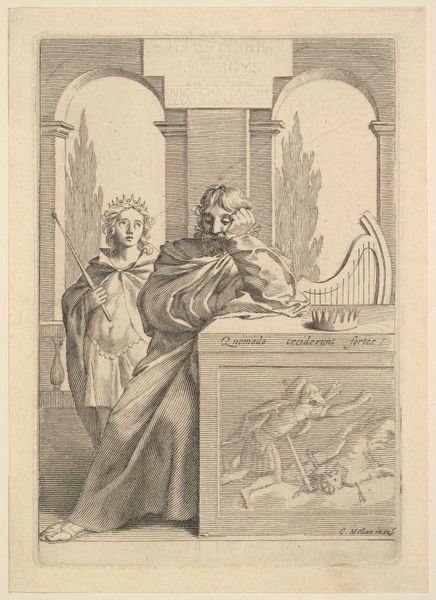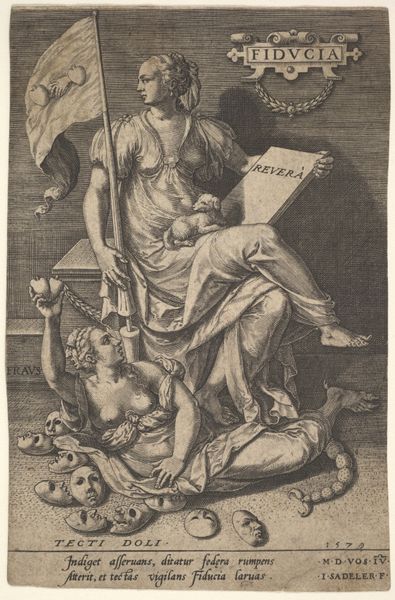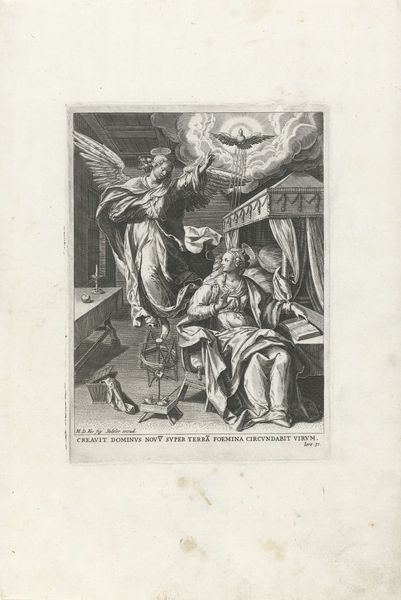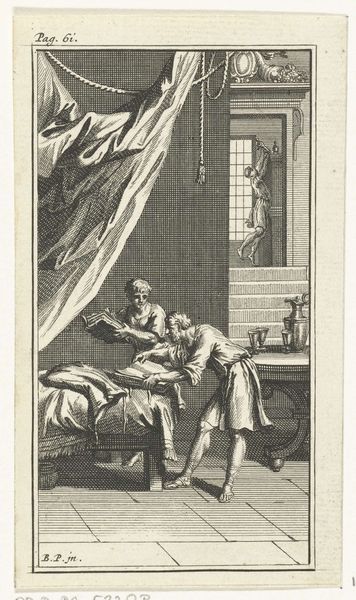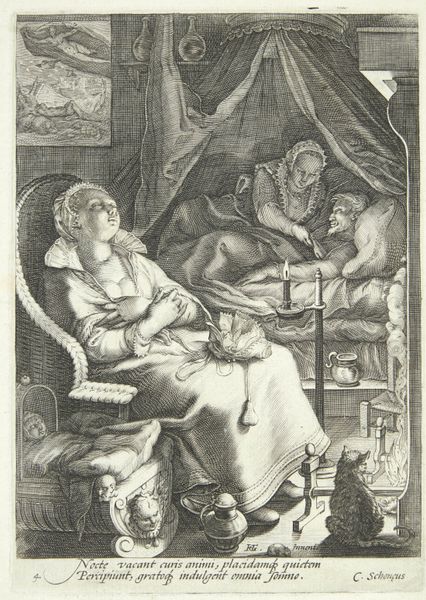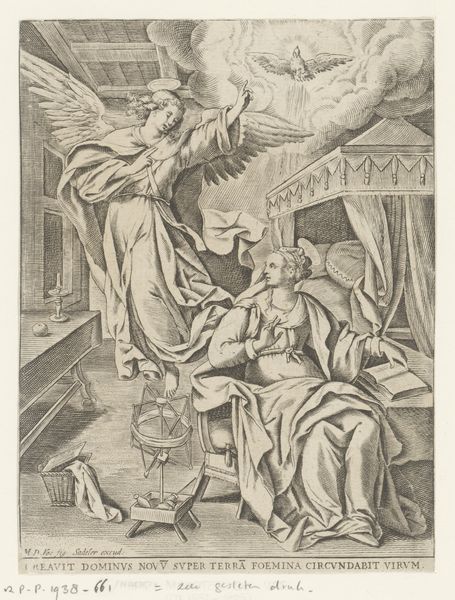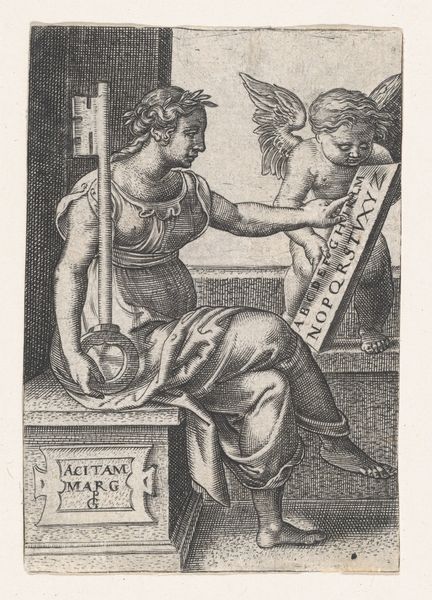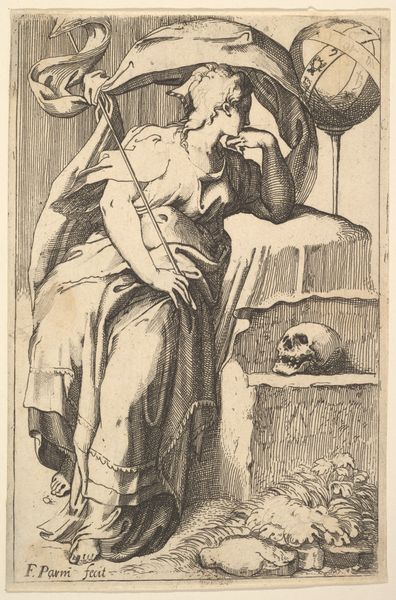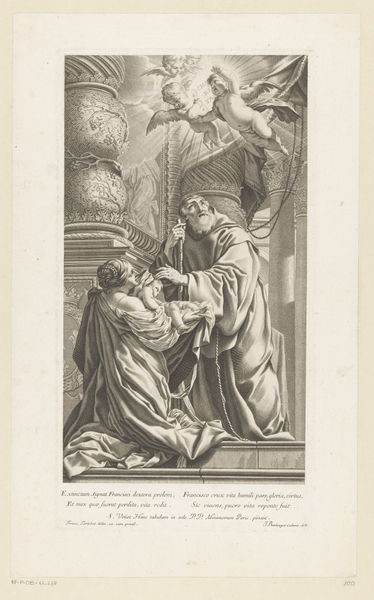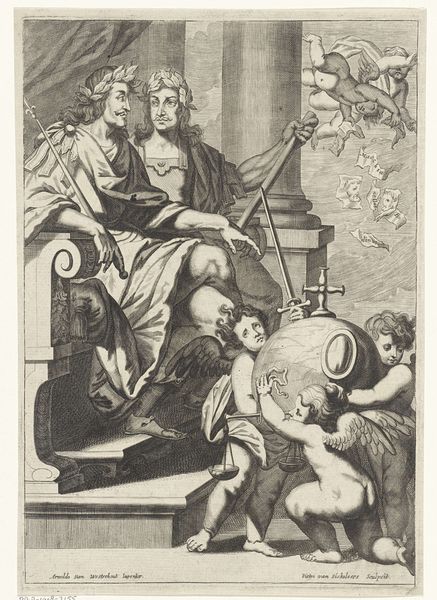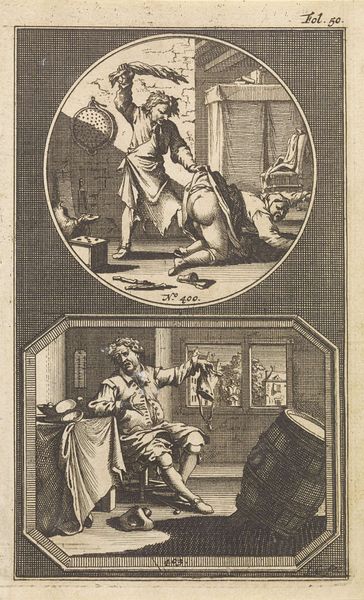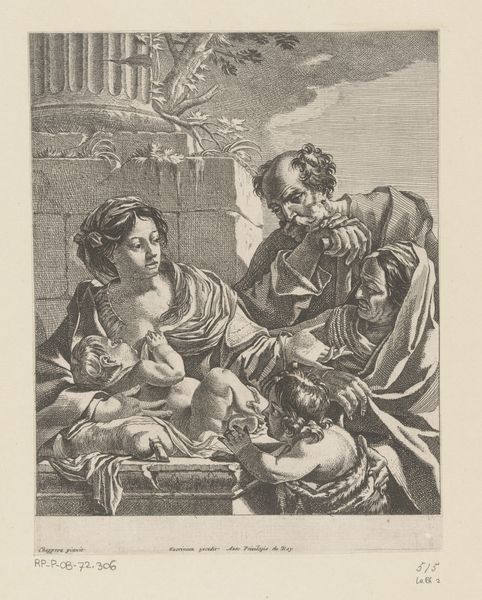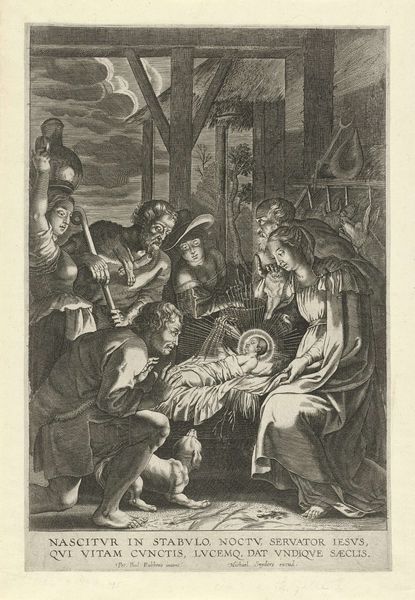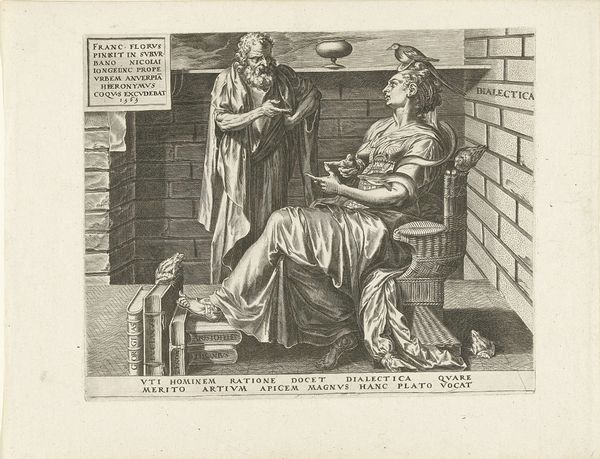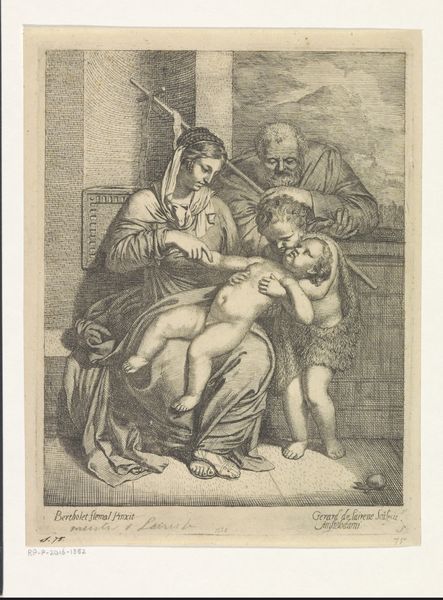
print, engraving
#
baroque
# print
#
caricature
#
figuration
#
genre-painting
#
engraving
Dimensions: height 300 mm, width 162 mm
Copyright: Rijks Museum: Open Domain
Curator: Look at the somber tones of this 17th-century engraving, "Schilder en Smid", attributed to Giovanni Girolamo Frezza. What strikes you first? Editor: Immediately, the figures—they're confined, almost compressed within the frame. And then there's the clear division: earthly labor versus divine inspiration, represented by the cherubic figures at the top. It gives the artwork an ethereal aesthetic appeal that invites the spectator to reflect upon artistic creation. Curator: The print showcases a scene where the artist and the blacksmith, representing different crafts, are at work, almost juxtaposed with these cherubs. But, to focus on the role of labor: what might the social and political contexts suggest about art’s status when the work was made? Editor: I'd argue it speaks volumes about the era’s view on labor and creativity. The chaining of the artist is symbolic; he is bound by constraints, maybe social expectations or financial dependencies. The blacksmith, hammering away, adds to this narrative of toil, questioning whose labor is really valued—the artisanal or the artistic? The scene is framed, too, within an almost prison-like architecture—very telling! Curator: Fascinating. Consider, though, that the baroque style often employs symbolism to elevate the artist, placing their creativity in dialogue with, not in subjugation to, societal structures. How do the putti above inform your interpretation? Editor: They're not innocent bystanders; those putti, complete with the suggestion of divine intervention, could be co-opting creativity, sanctifying an unbalanced socio-economic structure. The chains on the painter, in contrast, hint at lived inequality and oppression. Curator: Yes. However, note that engravings during this era, functioning as reproducible media, democratized art viewership, even subtly challenging elite patronage systems. How did such works reach a broader audience and contribute to reshaping societal values and class perceptions? Editor: Agreed. Prints played a key role in disseminating ideas to many different audiences and this particular engraving highlights artistic struggles as an almost universally comprehensible story. It’s not just decorative. This work becomes a visual comment on artistic freedom, access, and worth. The medium becomes an agent. Curator: Food for thought, certainly. It’s amazing how one artwork opens so many pathways into different viewpoints. Editor: Exactly! That intersection of aesthetics and lived experiences is really where we find relevance.
Comments
No comments
Be the first to comment and join the conversation on the ultimate creative platform.
